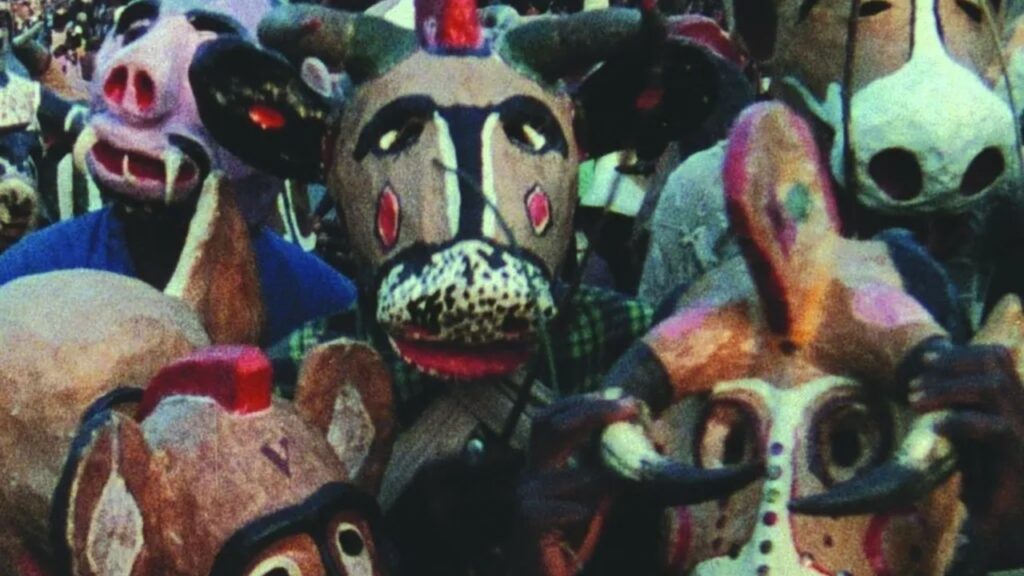The film ‘Sans Soleil‘ by Chris Marker is among the most significant cinematic reflections on memory, perception, and the passage of time in modern cinema. The film was released in 1983, which defies conventional narrative, presenting a complex collage of images, sounds, and reflections that move across continents and cultures.
At approximately one hundred minutes, Sans Soleil is structured as an essay film, composed of documentary footage, travelogue images, archival material, and experimental sequences. The film is narrated as a series of letters from the fictional cameraman Sandor Krasna to a woman named Monique. Through these letters, Marker constructs a personal and philosophical journey, linking intimate recollection with broader historical and cultural memory.
Subjective Memory and the Nonlinear Flow of Time in Marker’s Film

The central concern of Sans Soleil is the nature of memory itself. The film juxtaposes images from Japan, Guinea-Bissau, Iceland, and other locations, examining rituals, daily life, urban landscapes, and historical artifacts. These sequences are edited not to create causal connections but to provoke reflection. Marker’s narration emphasizes that memory is subjective and selective. Images are not neutral recordings of reality but fragments reconstructed by perception. A scene of Japanese street life may follow footage of soldiers, children, or an archival record of conflict, drawing implicit comparisons across time, geography, and human experience. The viewer is invited to consider how memory organizes events, imposes meaning, and carries emotion.
Time in Sans Soleil is treated as non-linear, layered, and mutable. Unlike traditional documentary or narrative cinema, Marker does not rely on chronological progression. Past and present coexist, and historical events echo into the images of daily life. A moment from a ritual may resonate with personal reflection; archival footage of war may illuminate contemporary street scenes. The film emphasizes that recollection does not reproduce experience faithfully but transforms it, constructing an internal reality that is always at once present and absent. Marker’s use of juxtaposition and associative editing demonstrates that time in cinema can be subjective, a construct that mirrors human consciousness rather than external chronology.
The visual style of Sans Soleil reinforces its philosophical concerns. The film combines color and black-and-white images, archival materials, and documentary footage with occasional staged sequences. Marker’s camera moves fluidly across landscapes, faces, and objects, often lingering on details that suggest both beauty and transience. The act of looking is foregrounded, as viewers are constantly aware of the mediation of vision through the camera lens. Each image carries the weight of memory, of absence, and of ethical reflection. Marker draws attention to the responsibility inherent in recording, suggesting that to film is to intervene in memory, to select and interpret what will endure.
How Sans Soleil Shapes What We Remember

The film also engages with historical and cultural memory, exploring the ethical implications of representation. Scenes of Guinea-Bissau juxtaposed with Japanese urban landscapes or Icelandic terrains highlight differences in social structures, technological development, and human experience. Yet Marker refrains from imposing judgment. Instead, he encourages reflection on the passage of time, on the persistence of human creativity, and on the fragile continuity of civilizations. The film situates personal memory within a larger context, demonstrating that individual experience is inseparable from collective history.
Sound and narration provide a continuous intellectual and emotional thread. The voice-over bridges disparate images and events, offering insight while resisting didacticism. Music and ambient sound complement the images, often creating tension between what is heard and what is seen. The effect is contemplative, prompting the viewer to consider the relationship between perception, recording, and meaning. The film does not offer resolution as it resists closure, reflecting the open-ended nature of memory itself.
Sans Soleil achieves what few films attempt, because it transforms cinema into a medium for philosophical reflection. Through associative editing, poetic narration, and meticulous attention to visual detail, Marker constructs a layer based on memories, time, and human perception. The film emphasizes that the act of recording is inseparable from interpretation, that memory is always reconstructed, and that perception shapes reality. In its refusal to adhere to linear storytelling, Sans Soleil mirrors the complexity of human consciousness, presenting time, history, and personal experience as intertwined, fragile, and perpetually in motion.




